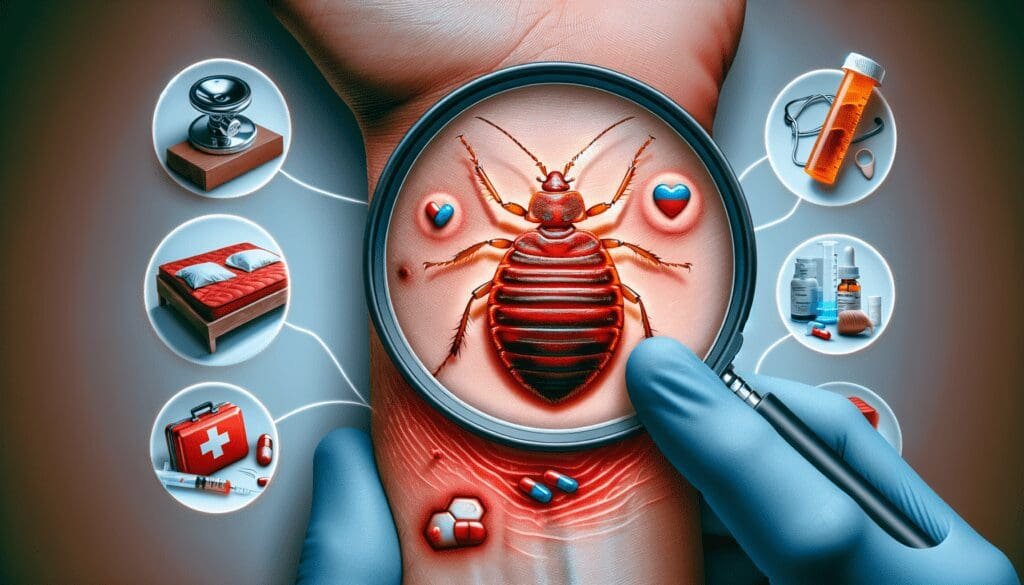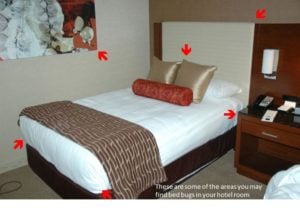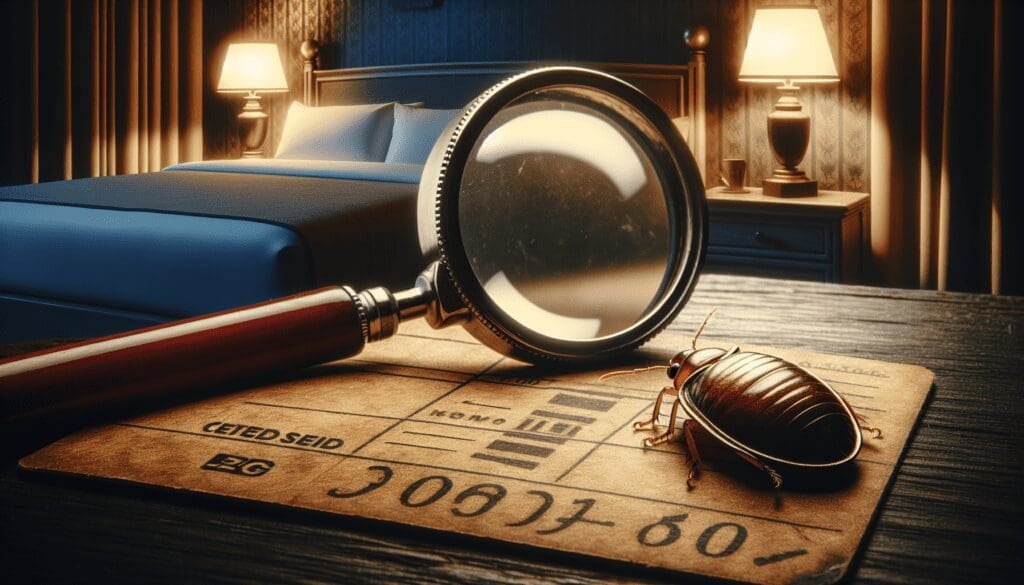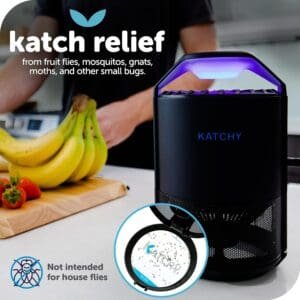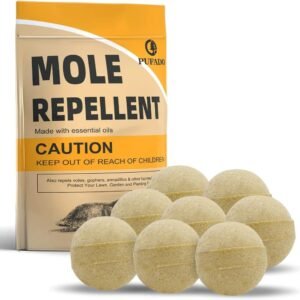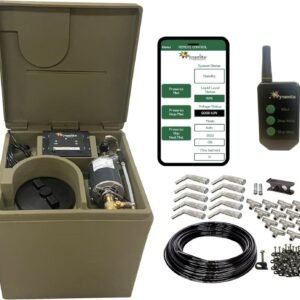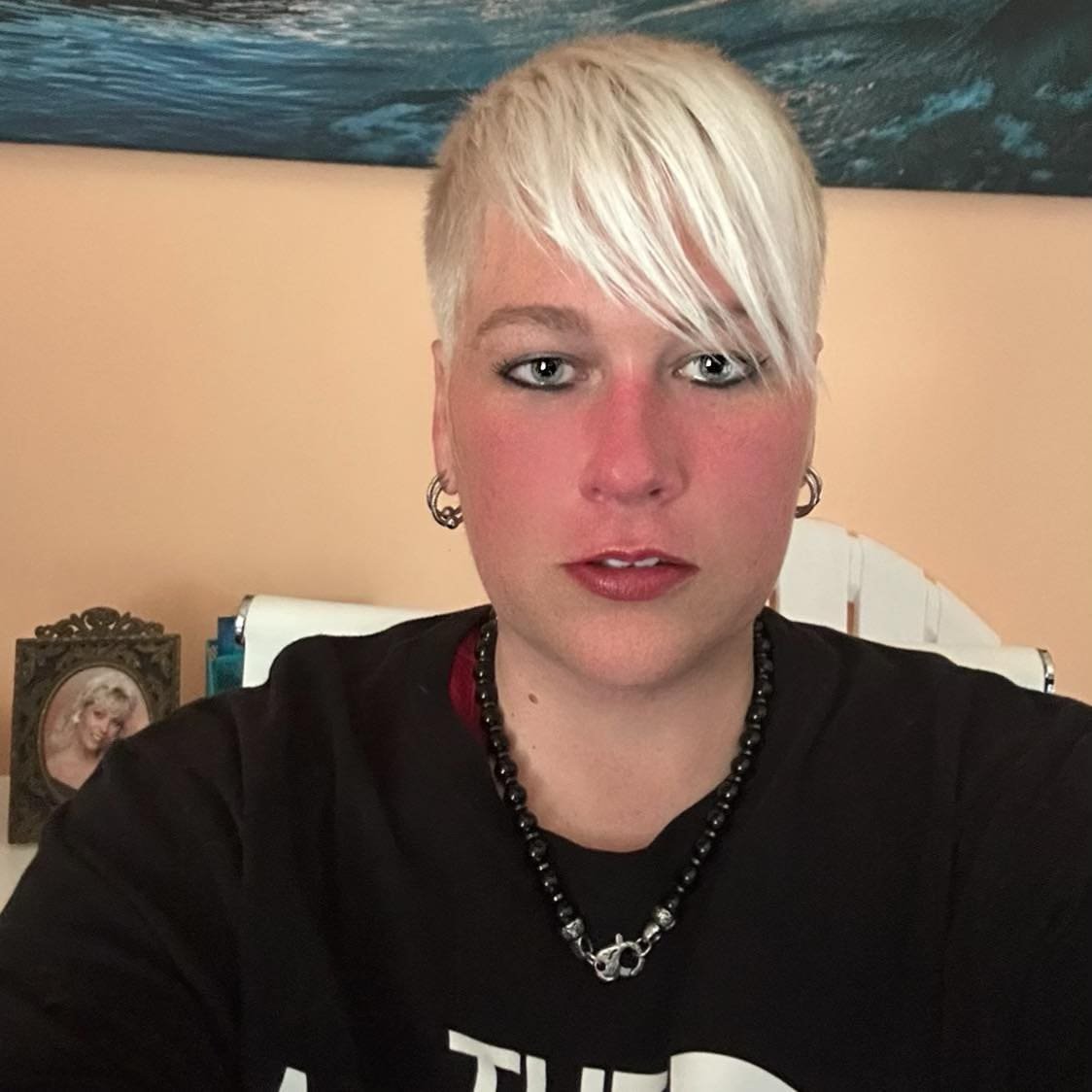How Do You Check For Bedbugs In A Hotel
So, you’re planning a much-needed vacation and want to make sure you have a comfortable stay at your hotel. One thing you definitely don’t want to bring back home with you is a bunch of bedbugs! But how do you ensure that your room is free of these unwanted guests? In this article, we will explore some simple yet effective methods to check for bedbugs in a hotel, giving you peace of mind during your travels.
Inspecting the Room
Start with your Luggage
When you first enter your hotel room, it’s important to start by inspecting your luggage. Place your suitcases and bags on a hard surface, such as a luggage rack or a tiled area, rather than on the bed or carpet. This will prevent any potential bedbugs from climbing onto your belongings.
Check the Bedding
The bed is where bedbugs are most commonly found, so it’s crucial to thoroughly inspect the bedding. Start by pulling back the sheets and checking for any signs of bedbug activity. Look for dark stains, bloodstains, or live bedbugs crawling on the surface.
Examine the Mattress
Next, take a closer look at the mattress itself. Inspect the seams, corners, and piping for any signs of bedbugs. These small pests can hide in tiny crevices, so be sure to thoroughly examine the entire mattress.
Inspect the Box Spring
Don’t forget to inspect the box spring as well. Bedbugs often seek refuge in the box spring, so it’s important to check for any signs of infestation. Carefully examine the corners, seams, and underside of the box spring for any evidence of bedbugs.
Scan the Headboard
Bedbugs can also hide in the headboard of the bed, so be sure to scan it carefully. Look for any cracks, crevices, or dark spots that could indicate a potential infestation. Use your flashlight to get a clear view of the entire surface.
Search the Nightstands
Bedbugs can find their way into the drawers of nightstands, so it’s essential to inspect these as well. Pull out the drawers one by one and examine the corners, seams, and interior for any signs of bedbug activity.
Look for Signs on Furniture
In addition to the bed and nightstands, bedbugs can also hide in other furniture in the room. Take a close look at chairs, sofas, and any upholstered furniture for any signs of bedbug infestation. Look for dark spots, bloodstains, or live bedbugs crawling on the surface.
Check the Upholstery
Upholstered furniture, such as chairs and sofas, can provide hiding spots for bedbugs. Take a few extra minutes to thoroughly inspect the upholstery for any signs of bedbug activity. Look for dark stains, bloodstains, or live bedbugs on the fabric.
Examine Curtains and Blinds
Bedbugs can also hide in the folds and crevices of curtains and blinds. Carefully inspect them for any signs of bedbug activity, such as dark spots or shed skins. Give them a gentle shake to see if any bedbugs fall out.
Inspect the Carpet and Floor
Lastly, don’t forget to check the carpet and floor for any signs of bedbugs. Look for dark stains or shed skins in the carpet fibers. Pay close attention to the areas around the bed and furniture, as these are common hiding spots for bedbugs.
Checking Common Hiding Spots
Inspect the Seams and Crevices
Bedbugs are masters at hiding in tight spaces, so it’s important to inspect the seams and crevices of furniture and upholstery. Use a flashlight to get a better view and carefully examine these areas for any signs of bedbug activity.
Look for Dark Stains
Dark stains on mattresses, furniture, or bedding can indicate the presence of bedbugs. These stains are often excrement or blood left behind by the pests. Take the time to carefully examine these areas for any dark spots or stains.
Search for Live Bedbugs
The most obvious sign of a bedbug infestation is the presence of live bugs. Bedbugs are small, reddish-brown insects that are about the size of an apple seed. Look for them crawling on surfaces or hiding in cracks and crevices.
Check Cracks and Piled Items
Bedbugs love to hide in cracks and crevices, so it’s important to thoroughly inspect these areas. Look for any cracks in furniture, walls, or baseboards that could serve as hiding spots. Additionally, be cautious when handling piled items, such as luggage or clothing, as bedbugs can easily hide within them.
Examine Electrical Outlets
Electrical outlets provide another potential hiding spot for bedbugs. Use caution when inspecting these areas and be sure to check for any signs of bedbug activity. Look for dark spots or shed skins in and around the outlets.
Scan the Wall Decorations
Wall decorations, such as picture frames or artwork, can also harbor bedbugs. Take a moment to inspect these items, especially if they are hung near the bed. Look for any signs of bedbug activity, such as dark stains or shed skins.
Inspect the Bathroom
Although bedbugs are most commonly found in sleeping areas, they can occasionally make their way into the bathroom. Inspect the bathroom thoroughly, paying attention to areas where fabric or upholstered items may be present. Look for any signs of bedbug activity, such as dark stains or live bugs.
Check Wardrobes and Closets
Bedbugs can hide in wardrobes and closets, so it’s important to inspect these areas as well. Carefully examine the inside of drawers, along the seams, and in any clothing or linens stored inside. Look for signs of bedbug activity, such as dark stains or shed skins.
Look for Signs in Luggage Racks
Luggage racks are commonly used by travelers, making them a potential avenue for bedbugs to hitch a ride. Take a moment to inspect the luggage rack, paying attention to the straps, joints, and corners. Look for any signs of bedbug activity, such as dark stains or shed skins.
Examine the Headboard Attachments
The attachments and fixtures of the headboard can be hiding spots for bedbugs. Take the time to carefully inspect these areas, looking for any signs of bedbug activity. Use a flashlight to get a better view and be thorough in your examination.
Identifying Bedbug Signs
Spotting Live Bedbugs
The most obvious sign of a bedbug infestation is the presence of live bugs. Adult bedbugs are about the size of an apple seed and are reddish-brown in color. Look for them crawling on surfaces or hiding in cracks and crevices.
Identify Bedbug Eggs
Bedbug eggs are small, about 1mm in size, and are white or translucent in color. They are often found in clusters or rows and are usually hidden in cracks and crevices near feeding areas. Look for these tiny eggs during your inspection.
Recognize Excrement Stains
Bedbugs leave behind excrement, which appears as dark stains on surfaces. These stains may be small dots or larger smears. Take the time to carefully inspect bedding, furniture, and walls for any signs of dark stains.
Look for Shed Skins
As bedbugs grow and develop, they shed their outer skin. These shed skins are often translucent and can be found near areas of bedbug activity. Look for these skins in cracks, crevices, and hiding spots during your inspection.
Notice Bloodstains
When bedbugs feed on humans, they leave behind bloodstains on surfaces. These stains may appear as small dots or larger smears and are often found on bedding or furniture. Take the time to carefully examine these areas for any signs of bloodstains.
Identify Musty Odors
Bedbugs release a musty odor that is often described as being similar to the scent of almonds or coriander. If you notice a strong, musty smell in your hotel room, it could be an indication of a bedbug infestation. Be aware of any unusual odors during your inspection.
Recognize Bedbug Bites
Bedbug bites are typically small, red, and itchy. They may appear in clusters or rows and are often found on exposed areas of the body, such as the arms, legs, or neck. If you notice any bites on your skin, it could be a sign of a bedbug infestation in the hotel room.
Be Aware of Allergy Symptoms
Some people may have an allergic reaction to bedbug bites, which can cause additional symptoms. These symptoms may include severe itching, swelling, or a rash. If you experience any unusual allergic reactions during your stay, it’s important to consider the possibility of bedbugs.
Consider Connecting Symptoms
It’s important to consider all the signs and symptoms together when identifying a potential bedbug infestation. While one or two signs alone may not definitively indicate an infestation, a combination of multiple signs should raise concerns. If you notice several signs during your inspection, it’s advisable to take further action.
Using Tools for Inspection
Flashlight
A flashlight is an essential tool for inspecting for bedbugs as it allows you to get a better view of small cracks, crevices, and dark spots. Make sure to use a flashlight with a strong beam to thoroughly examine all potential hiding spots.
Magnifying Glass
A magnifying glass can be helpful for a closer inspection of small details, such as eggs, shed skins, or excrement stains left behind by bedbugs. It allows you to see these signs more clearly and identify them with greater certainty.
Credit Card or Key Card
A credit card or key card can be used to scrape along seams, crevices, or other tight spaces where bedbugs may be hiding. This can help dislodge any hidden pests or eggs, making them easier to spot during your inspection.
Bedbug Interceptor Traps
Bedbug interceptor traps are small devices that can be placed under the legs of the bed or furniture. These traps prevent bedbugs from climbing up onto the furniture, allowing you to monitor their presence and capture them for further identification.
Handheld Steamer
A handheld steamer can be used to treat potential bedbug hiding spots, such as cracks, crevices, or fabric-covered furniture. The high temperature of the steam can kill bedbugs and their eggs, helping to eliminate any potential infestation.
Disposable Gloves
Disposable gloves are important for protecting yourself during the inspection process. They help prevent direct contact with bedbugs or any potential allergens. Remember to dispose of the gloves properly after use to avoid any cross-contamination.
Sealable Plastic Bags
Sealable plastic bags are useful for isolating any items that may be suspected of carrying bedbugs. If you find any signs of infestation, place the item in a sealed plastic bag to prevent the spread of bedbugs and notify hotel staff immediately.
White Pillowcase
A white pillowcase can be used as a makeshift detection tool during your inspection. Place it on top of the mattress or furniture and use a credit card or key card to scrape along the surface. Any bedbugs or eggs dislodged will be more visible on the white fabric.
Tape or Sticky Traps
Tape or sticky traps can be used to capture any bedbugs that may be hiding in cracks, crevices, or other hard-to-reach areas. Simply press the sticky surface against the suspected areas to catch any pests that come into contact with it.
Alcohol or Wipes
Alcohol or wipes can be used to clean your tools, such as the flashlight, magnifying glass, or credit card, between inspections. This helps prevent the potential spread of bedbugs or their eggs from one area to another.
Preventing Bedbug Infestations
Choosing Reputable Hotels
When selecting a hotel, it’s important to choose reputable establishments that prioritize cleanliness and pest control. Look for hotels with positive reviews and high ratings, as this can be an indication of their commitment to providing a bedbug-free environment.
Reading Reviews and Ratings
Before making a reservation, take the time to read reviews and ratings from previous guests. Look for any mentions of bedbugs or cleanliness issues. While one or two negative reviews may be outliers, a pattern of complaints should raise concerns.
Inspecting Bedbug Registry
The Bedbug Registry is an online resource where travelers can report bedbug sightings in hotels and accommodations. Before booking a hotel, consider checking the registry for any reports of bedbug infestation. This can help you make an informed decision.
Store Luggage Appropriately
To minimize the risk of bringing bedbugs home with you, it’s important to store your luggage appropriately during your hotel stay. Use a hard surface, such as a luggage rack or tiled area, rather than placing your bags on the bed or carpet.
Avoid Placing Items on Beds
To reduce the chance of bedbugs hitching a ride on your personal belongings, avoid placing items, such as clothes or bags, directly on the bed. Instead, use designated storage areas or surfaces that are less likely to harbor bedbugs.
Wash and Dry Clothes on High Heat
When you return home from your trip, it’s essential to wash and dry your clothes on high heat. Bedbugs are sensitive to high temperatures, and washing and drying your clothes on the hottest settings can help eliminate any potential hitchhikers.
Use Luggage Racks or Hard Surfaces
When unpacking and repacking your luggage, it’s important to use luggage racks or hard surfaces rather than the bed or floor. This reduces the chances of bedbugs crawling into your belongings and makes it easier to spot any signs of infestation.
Keep Personal Belongings Sealed
To further prevent bedbugs from infiltrating your belongings, keep personal items sealed in plastic bags or luggage organizers. This provides an extra layer of protection and makes it harder for bedbugs to access your items.
Use Bedbug-Proof Mattress Covers
Using bedbug-proof mattress covers can help protect you from any potential bedbugs in the room. These covers create a barrier that prevents bedbugs from entering or exiting the mattress, reducing the likelihood of an infestation.
Stay Vigilant during Checkout
Even if you didn’t encounter any bedbugs during your stay, it’s important to stay vigilant during checkout. Take a final look around the room before leaving and inspect your luggage and belongings for any signs of bedbug activity. This ensures that you don’t unknowingly bring any unwanted guests home with you.
What to Do If You Find Bedbugs
Notify Hotel Staff Immediately
If you discover bedbugs in your hotel room, it’s crucial to notify the hotel staff immediately. Inform the front desk or management and provide them with a detailed description of the bedbug activity you observed. They should take immediate action to address the issue.
Request a Room Change
In the event of a bedbug infestation, it’s advisable to request a room change. Ask the hotel staff for a different room that is not adjacent to or directly above or below the infested room. It’s essential to ensure that you are moved to an area that is free from bedbugs.
Ask for Professional Treatment
Once you have reported the bedbug infestation, it’s important to request professional treatment from the hotel. A certified pest control company should be contacted to inspect and treat the affected room and adjacent areas to eliminate the bedbugs completely.
Take Photos and Document Evidence
To protect yourself and ensure proper documentation, take photos or videos of the bedbugs and any signs of infestation. This evidence can be crucial if you need to file a complaint or seek compensation for any damages or expenses incurred as a result of the infestation.
Protect Your Belongings
If you discover bedbugs in your hotel room, it’s important to take steps to protect your belongings. Keep your luggage sealed in plastic bags and avoid placing it on the bed or floor. It’s also advisable to keep your personal items separated and sealed in plastic to prevent any potential spread of bedbugs.
Cleanse Your Luggage and Clothes
To prevent the spread of bedbugs to your home, it’s crucial to thoroughly cleanse your luggage and clothes after encountering an infestation. Wash all clothing on high heat and tumble dry on the hottest setting. Vacuum your luggage thoroughly, paying close attention to seams and pockets.
Consider Seeking Legal Advice
In cases where the hotel fails to address the bedbug infestation appropriately or denies responsibility, it may be necessary to seek legal advice. Consult an attorney specializing in landlord-tenant or personal injury law to determine your rights and options for pursuing compensation.
Review Hotel Policies and Rights
Before your trip, familiarize yourself with the hotel’s policies regarding bedbug infestations. Understand your rights as a guest and be aware of any specific procedures or guidelines the hotel has in place for handling such situations. This knowledge can be valuable in advocating for yourself if an infestation occurs.
Report the Incident
In addition to notifying the hotel staff, consider reporting the bedbug incident to local health authorities or consumer protection agencies. By doing so, you can help raise awareness and potentially prevent future infestations in the same establishment.
Take Precautions at Home
After a hotel stay with a potential bedbug encounter, it’s important to take precautions at home to prevent any potential infestation. Keep your luggage sealed and place it in a designated area away from bedrooms. Regularly inspect your bedding and furniture to catch any potential bedbug activity early.
Tips for Traveling Safely
Inspect Your Bed Before Unpacking
Before settling into your hotel room, it’s crucial to inspect the bed thoroughly for any signs of bedbug activity. Follow the steps outlined in the “Inspecting the Room” section to ensure a safe and comfortable stay.
Use Bedbug Traps as Precaution
Consider using bedbug interceptor traps under the legs of the bed or furniture as an extra precautionary measure. These traps can help monitor for bedbug activity and capture any potential pests before they have a chance to spread.
Keep Luggage Off the Bed and Floor
To minimize the risk of bedbugs hitching a ride on your luggage, always keep it off the bed and floor. Use a luggage rack or hard surface for storage instead. This helps prevent any potential bedbugs from easily accessing your belongings.
Monitor for Bedbug Bites
Regularly monitor your body for any signs of bedbug bites during your stay. Pay attention to any unusual itching, redness, or irritation and inspect your skin for clusters or rows of small, red bites that are characteristic of bedbug activity.
Inspect Clothing and Belongings
Before repacking your clothes and belongings, inspect them for any signs of bedbug activity. Thoroughly check seams, pockets, and folds for any dark stains, shed skins, or live bugs. This ensures that you don’t transport any unwanted guests back home with you.
Avoid Bringing Bedbugs Home
To prevent bringing bedbugs home with you, it’s essential to take precautions during your stay. By thoroughly inspecting your hotel room, practicing good hygiene, and keeping your belongings sealed and protected, you can minimize the risk of infestation in your own home.
Wash Clothing and Vacuum Luggage
Upon returning home, it’s crucial to promptly wash all of your travel clothing on high heat. Additionally, use a vacuum cleaner with a crevice tool to thoroughly clean your luggage, paying close attention to seams and pockets where bedbugs may hide.
Isolate and Cleanse Potentially Infested Items
If you suspect any of your belongings may have come into contact with bedbugs, isolate them in sealed plastic bags until you can properly treat or cleanse them. Wash or dry-clean any washable items, and consider using a steamer or freezing non-washable items to eliminate any potential pests.
Seek Professional Pest Control
If you suspect a bedbug infestation in your home after returning from your trip, it’s important to seek professional pest control. Bedbugs can be difficult to eradicate, and professional treatment is often necessary to fully eliminate an infestation.
Educate Yourself on Bedbug Prevention
The more you know about bedbugs and their prevention methods, the better equipped you will be to protect yourself during your travels. Educate yourself on the signs of infestation, prevention techniques, and effective treatment options to ensure a safe and enjoyable trip.
Common Bedbug Misconceptions
Myth: Bedbugs Only Infest Dirty Places
One common misconception about bedbugs is that they only infest dirty or unsanitary environments. In reality, bedbugs are equal-opportunity pests and can be found in clean, well-maintained spaces as well. It’s important to remember that bedbugs are attracted to human blood, not filth or dirt.
Myth: Bedbugs Are Not Visible to the Naked Eye
While bedbugs are small, they are certainly visible to the naked eye. Adult bedbugs are about the size of an apple seed and have a reddish-brown color. Bedbug eggs, shed skins, and excrement stains are also visible to the naked eye with careful inspection.
Myth: Bedbugs Only Bite at Night
Although bedbugs are often associated with biting at night, they can bite at any time if they are hungry and a human host is nearby. While they are more active at night, they can adapt their feeding habits to suit their environment.
Myth: Bedbugs Stay on Human Hosts
While bedbugs are known to feed on human blood, they do not stay on a host’s body like ticks or fleas. Bedbugs feed for a few minutes and then retreat to their hiding spots, which are often in close proximity to the bed or resting area.
Myth: Bedbugs Are Only Found in Beds
Although bedbugs are commonly found in beds due to their attraction to human hosts, they can also infest other areas such as sofas, chairs, luggage, and even electrical outlets. Bedbugs can travel and hide in various locations throughout a room or building.
Myth: Bedbugs Transmit Diseases
While bedbug bites can be uncomfortable and may cause itching or allergic reactions in some individuals, they are not known to transmit diseases. Bedbugs feed solely on blood and do not carry or transmit pathogens like mosquitoes or ticks.
Myth: Bedbug Bites Are Always Itchy
Not everyone experiences itching or discomfort from bedbug bites. Reactions to bedbug bites can vary from person to person, with some individuals not experiencing any symptoms at all. Itching and irritation are common, but not universal, responses to bedbug bites.
Myth: Bedbugs Are Easy to Eliminate
Unfortunately, bedbugs can be notoriously difficult to eliminate once an infestation has occurred. They are resilient pests that can hide in tiny cracks and crevices, making it challenging to fully eradicate them without professional intervention.
Myth: Bedbugs Are Only Found in Low-Quality Hotels
Bedbugs can be found in hotels of any quality level, as their presence is not solely determined by cleanliness or maintenance. Even luxury hotels can experience bedbug infestations, so it’s important to practice thorough inspection and prevention methods regardless of the hotel’s reputation.
Myth: Bedbugs Cannot Climb Smooth Surfaces
While it is true that bedbugs have difficulty climbing extremely smooth surfaces, such as glass or metal, they are still capable of climbing fabric, wood, and other textured materials. It’s important to not solely rely on smooth surfaces as a defense against bedbugs.
Seek Professional Help
When in Doubt, Consult Pest Control Experts
If you suspect a bedbug infestation but are unsure, it’s always best to consult with pest control experts. They have the knowledge and experience to accurately identify and assess the situation, providing guidance on appropriate next steps.
Professional Inspection and Treatment
A professional inspection is often necessary to accurately identify the presence of bedbugs and assess the extent of an infestation. If an infestation is confirmed, professional treatment is the most effective way to eliminate bedbugs and prevent future recurrences.
Follow Experts’ Guidance
When seeking professional help, it’s important to follow the guidance and recommendations of the experts. They will provide instructions on how to prepare for treatment, what to expect during the process, and any necessary follow-up actions.
Understand the Extent of Infestation
A professional inspection will help determine the extent of the bedbug infestation. This information is crucial for determining the appropriate treatment plan and understanding the level of effort required to fully eliminate the pests.
Consider Long-Term Pest Management
To prevent future bedbug infestations, it’s important to consider long-term pest management strategies. This may involve ongoing monitoring, regular inspections, and preventative measures to minimize the risk of reinfestation.
Control Bedbugs at Different Life Stages
Effective bedbug control requires addressing all life stages of the pests, including eggs, nymphs, and adults. Pest control experts will employ various methods to target each stage, ensuring comprehensive eradication of the infestation.
Prevent Future Infestations
Professional pest control experts can provide guidance on preventative measures to help minimize the risk of future bedbug infestations. This may involve sealing cracks and crevices, installing bedbug-proof mattress covers, and implementing regular monitoring and inspection routines.
Work with Certified Pest Control Companies
When seeking professional pest control services for bedbug infestations, it’s important to choose certified companies with experience in handling bedbugs. Look for reputable pest control companies that specialize in bedbug eradication and have a proven track record of success.
Be Prepared for Treatment Process
It’s important to be prepared for the treatment process, as it may require some preparation on your part. Follow the instructions provided by the pest control experts, which may include removing clutter, laundering fabrics, and temporarily vacating the premises during treatment.
Ensure Vigilant Monitoring Afterwards
After professional treatment, it’s essential to remain vigilant and continue monitoring for any signs of bedbug activity. Regularly inspect bedding, furniture, and other potential hiding spots to catch any potential reinfestations early and address them promptly.
Conclusion
Bedbugs can pose an inconvenience and discomfort during your hotel stay, but with proper knowledge and inspection techniques, you can take steps to minimize the risk of encountering them. By diligently inspecting your accommodations, understanding the signs of bedbug activity, and following preventative measures, you can help protect yourself and others from these unwelcome pests. Remember to notify hotel staff if you encounter bedbugs, take measures to prevent their spread, and seek professional help if needed. With continued vigilance and education, we can promote safe and enjoyable stays for all travelers. So stay informed, stay alert, and take precautions for your peace of mind.
